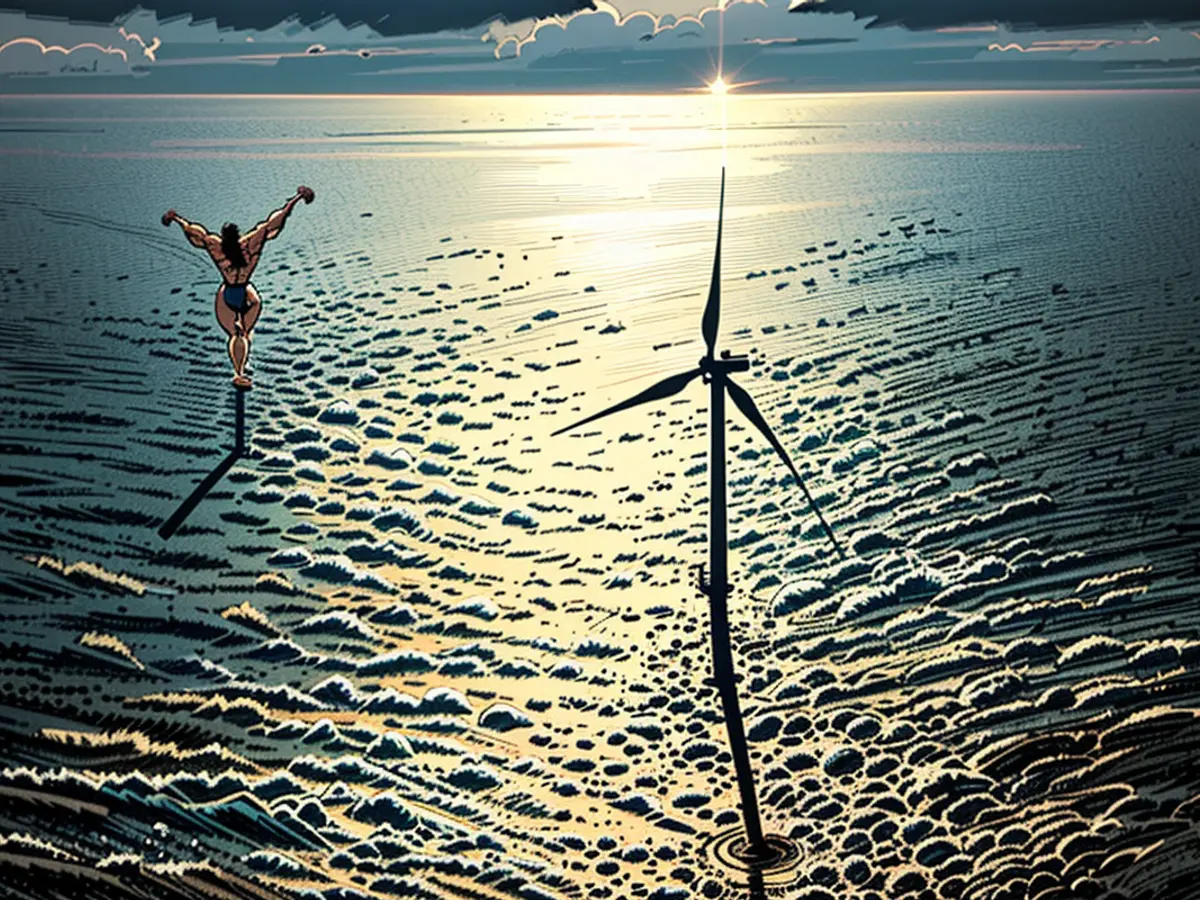Vattenfall and Salzgitter AG Team Up for Sustainable Steel Production
Energy giant Vattenfall and industrial titan Salzgitter AG have struck a deal to collaborate on green energy for steel production, kicking off in 2028. Salzgitter will receive around 300 gigawatt-hours of electricity annually, enough to power 120,000 households, from Vattenfall's Nordlicht 1 wind farm off the coast of Borkum. In return, Salzgitter will secure a 75-megawatt power connection for 15 years.
Vattenfall Board Member and Markets Division Head Martijn Hagens expressed, "This partnership supports our vision for a fossil-free future, empowering suppliers, partners, and customers to do the same." Salzgitter CEO Gunnar Groebler echoed this sentiment, noting, "Green steel necessitates green energy, making this agreement another step towards energy demands for low-carbon production."
Construction on Nordlicht 1 is underway, with an expected 2028 launch. The wind farm, located approximately 85 km north of Borkum, will feature 68 turbines and boast a total capacity of 980 megawatts. Vattenfall holds a 51% stake in the project, with the remaining 49% claimed by BASF.
Hagens underscored the cost-competitiveness and provenance of electricity from exclusive supply agreements promised by Vattenfall, suggesting an increase in power collaborations in Germany. According to the German Energy Agency (Dena), future volume could potentially reach 192 terawatt-hours by 2030, corresponding to a quarter of Germany's total electricity demand.
Unexpectedly, this collaboration goes beyond supporting renewable energy—it bolsters both companies' green steel production strategies. By utilizing renewable energy sources to power hydrogen production, they effectively reduce the carbon footprint of steel production while driving investments in new jobs and clean energy sectors.
Further Reading
Additional Insights
Vattenfall and Salzgitter's partnership demonstrates how their collective expertise in renewable energy and steel production synergizes towards a more sustainable path. The collaboration's green steel production involves multiple components, including:
- Hydrogen-Based Steelmaking: Salzgitter's SALCOS (Salzgitter AG Low-Carbon Steel) project focuses on utilizing hydrogen to produce low-carbon steel. By 2050, the project aims to produce carbon-neutral steel, helping to decrease carbon emissions in the steel industry.
- Hydrogen Use and Production: Hydrogen can replace carbon as a reducing agent in the process of iron ore reduction, producing water vapor instead of CO2. This hydrogen-based direct reduction (H-DR) not only decreases the carbon footprint of steel production but also moves the industry towards more sustainable sources of energy.
- Integration with Renewable Energy: The collaboration pairs renewable energy sources from Vattenfall with hydrogen production which, in turn, helps power Salzgitter's green steel manufacturing processes. This seamless integration enhances the sustainability of the whole steelmaking process.
- Green Steel Market Growth: The European green steel market is predicted to expand significantly due to stringent environmental policies and the EU Green Deal. With Germany playing a significant role in the growth of this market, partnerships like Vattenfall and Salzgitter's will help sustain the industry's trajectory towards decarbonization.
- Economic and Environmental Benefits: Transitioning to green steel production can drive both economic and environmental benefits. New investments in clean energy and manufacturing sectors spur job creation. Additionally, a reduction in the carbon footprint of steel production helps Europe meet its climate goals and supports other industries like construction and automotive in their own emission reduction efforts.
In conclusion, Vattenfall and Salzgitter's collaboration exemplifies how companies can work together towards a more sustainable future, powered by renewable energy and green steel production. By integrating their strengths in hydrogen-based steelmaking, hydrogen production, and renewable energy sources, the two entities take a significant step towards reducing carbon emissions and advancing a green energy future.




